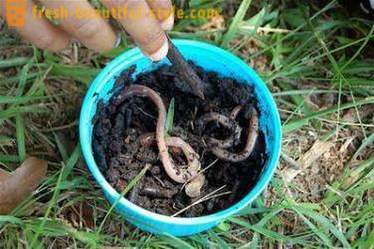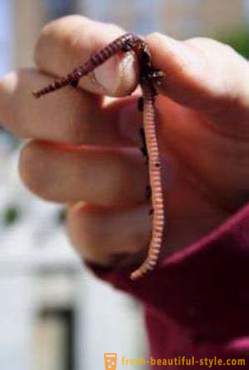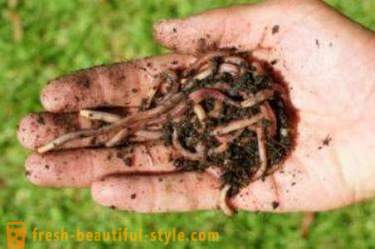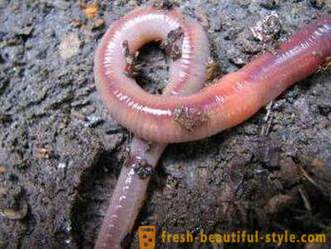How to skewer a worm on a hook. Types of worms and their methods of attachment hooks
Of course, experienced fishermen no question how to skewer a worm on a hook. But for beginners it will be useful to know that there are several ways to fix the bait. At the same time, there are several types of worms, which can successfully catch different kinds of fish, and each has its own method is pushed onto the hooks. If someone thinks that it does not matter, in fact, from just such trifles it depends intensity and quality of the bite. It should be noted that the worm - the most popular of all existing baits. They caught him as a peaceful fish, and many predators. For example, such a giant as catfish, lure greater pencil-Nightcrawlers worms.
How to skewer a worm on a hook?

In many ways, the popularity of such worms is because they are a natural food source in almost all reservoirs. They feed on everything from fry to large animals, from fish to peaceful toothy predators. Worms in all their diversity - the most versatile bait.
That is why it is so important to know how to skewer a worm on a hook. These skills are the foundation skills of catching, not only on the float rod, but also on the donk and feeder. Today is known a number of ways to put the bait hook. Perhaps at first glance it seems that the fish do not care what is the bait, she swallows it, that's all. But it's not quite true. Most peaceful species behave very cautiously. They are suspicious of all unnatural moving in water invertebrates. Even in the zhor they do not lose vigilance. For example, if the eel is not particularly gets accustomed to the fact that the swallows, the largest bream never take the bait, if that does not inspire confidence in him, especially noticeable in the autumn and spring, when the water is bright. So the method of sliding the worm hooks depends on how well the fish it will take and whether successful sweeps.
Forms for fishing worms

Bit worm on a hook depends on its type. Of course, these kinds of a great variety of invertebrates, but for fishing use only some of them. Rain or earthworm is widespread, often looking for him under leaf litter or in soil gardens. They have gray - pink color. The length can reach 10 cm. Perhaps, this type most often used for catching fish. Although he is not the catching capacity. Earthworms well kept on the hook, but the water does not remain active for a long time. Therefore, they are a little smaller than other types, but they remain the most affordable.
Shed - this is a very big and fat earthworm. The favorite bait catfish and burbot. The length of the worm can reach 30 cm. Living Nightcrawlers beneath the ground, are found only in rich organic fertilizer soil. Shed - the perfect bait for major trophies. At the same time, trying to decide how to skewer a worm on a hook, it is necessary to know that the same catfish like a big bundle of squirming.
In the semi-decomposed manure and straw can be found manure worms. Their main difference from other species - is a sharp, unpleasant smell. But here is the fish like it. This worm is both monotonous and variegated. It is pushed on the hook well and holds on tight. It perfectly peaceful caught any fish. In coastal areas of the river you can find an excellent bait - water worm. He lives mainly in the mud. The best places to find it - the wharf, lesosplavnye log boom, raft. This worm has a red-brown color. To the touch it rough. The length of the water worm reaches 20 cm. Since this type is the basis of food supply almost all kinds of fish found in rivers and lakes, it is observed to him the most lively bite. They have only one drawback - their body is very delicate and is easily torn when pushed onto the hook.
of the worm on the hook attachment methods

The most common fishermen pierce the worm along the entire body. At the same time it is pulled over the entire length, and often pull on the line. What are the advantages of this method? The worm is the most covers not only sting, but the entire hook as a whole. This is very helpful especially to catch wary fish. For example, as threaded worm fishing for large bream and tench. Fish can only see the bait, it is up to the latter is unaware of the presence of the hook. At the same time she took a deep swallow the worm, so when playing is no problem.
Catch on the "beam"
This method is good when using small worms. One as a bait looks unattractive, but when a lot of them and they are active at the same time, the fish goes to them regularly. For example, a large hook beam can stick even large Nightcrawlers. That's how to catch catfish and burbot. But it is necessary to consider that in the muddy bottom to keep them higher, or they bury it in the ground.

Mounting the worm "eight"
This method is suitable for long worms. They cling to the hook loops. This gives a voluminous bait. The ends of the worm is left free. They squirm in water than do the bait more attractive.
How do I stick the worm on the hook pieces?
Typically, in such a way worm cling to float when fishing bait. In this case, the small snap hooks. The whole worm for it - it's too much. Then the fishermen simply break it into pieces and threaded through the hook through the body. In this case, from gap seats will be allocated to the smell. It reacts very good fish.













































